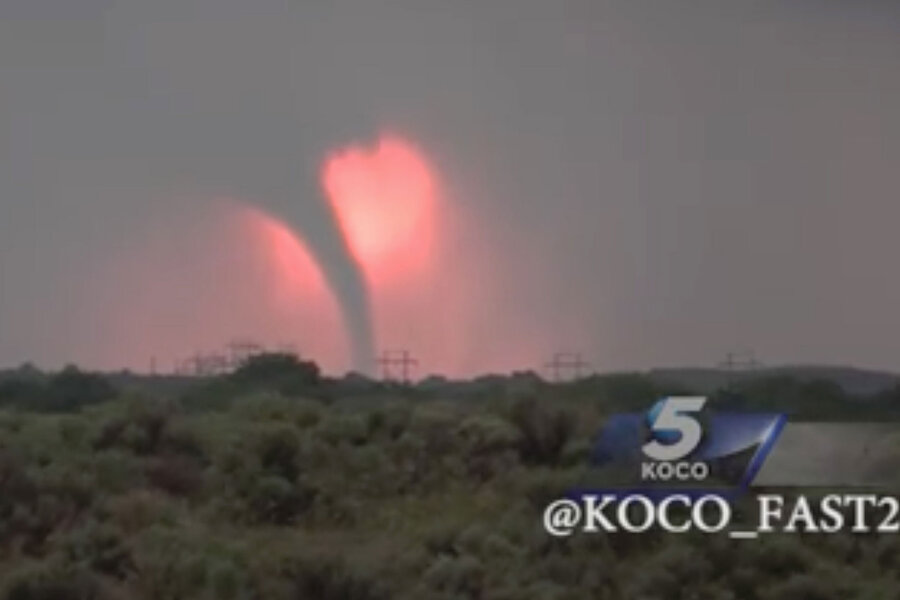'Double tornadoes' pummel Great Plains: Can warnings keep up?
Loading...
An unusual tornado system hit the Great Plains this week, overturning trucks, injuring two people in Kansas, and killing one in Oklahoma.
A rare double tornado touched down in Kansas, CNN reported. The storm system dropped hail that locals compared to baseballs and created multi-center tornadoes that touched down multiple times.
"The dual tornadoes ... were very impressive," Brad Guay, a meteorologist with the Center for Severe Weather Research, told CNN. "I've never seen that in person before, and it's unusual to have that occur."
US disaster relief officials have been working to improve warnings for many kinds of storm systems, including the storm and flooding patterns plaguing the Midwest and Plains states. They estimate having saved thousands of lives, as the Christian Science Monitor's Patrik Jonsson reported:
In the past decade, the US has dramatically improved disaster detection and warning efficacy, with lead times for tornado warnings growing from four to 13 minutes, a fact that likely saved lives in the 2013 Moore, Okla., tornado. Much of the progress has come from the increased processing capacity of computers and the ability to integrate very granular radar data with on-the-ground observations. The modes of disseminating alerts have also improved.
Hurricane Katrina marked a turning point for the United States disaster response protocol, and officials have been experimenting ever since with a warning system that inspires an appropriate amount of caution without inducing panic.
“Modern technology has brought us the greatest level of warning dissemination in our lifetime, but even with all that said there’s always going to be that situation where people may not be aware of what’s going on around them,” says Walt Zaleski, warning coordinator at the National Weather Service’s regional southern headquarters in Fort Worth, Texas, in an interview with the Monitor.
Throughout this week's storm, the National Weather Service has released a continuous stream of information via cell phones, social media, and other media outlets to help locals prepare:
The warnings help many, but in Davenport, Okla., flooding led to one car being swept off the road on Wednesday. One of its passengers drowned, reported for The Weather Channel.
"The Davenport area received between 4 and 5 inches of rain over the last 24 hours," said Weather.com meteorologist Chris Dolce. "The area could see more heavy bouts of rain through the end of the week."
Southern Nebraska, northern Kansas, and western Oklahoma can expect severe thunderstorms capable of tornadoes late on Thursday, the National Weather Service reported.






